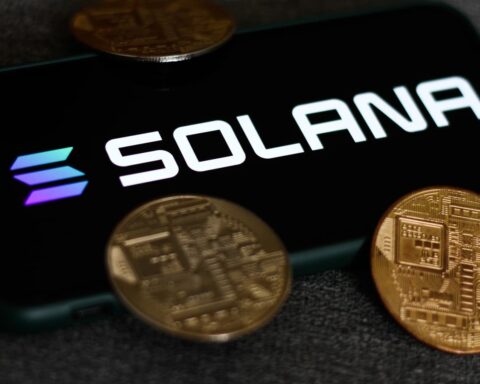Despite monumental progress in the past few years, the most popular smart contract blockchains remain limited in their scalability prowess. New blockchains like Solana and Sui have been somewhat of a disappointment, while developers are looking for better frameworks than Solidity and the EVM.
In this environment, a new chain provides a completely new architecture for smart contract scalability: Vara. It wants to bring modern asynchronous computing to smart contracts, a first in the industry.
The traditional blockchain machine is sequential: each transaction is expected to be executed one after the other. You can’t create transactions that wait for some process to finish, so either it all gets executed in its spot in the queue, or it gets rejected (or reverted) outright.
This model applies both to Bitcoin and to the Ethereum Virtual Machine (EVM), which have been some of the earliest blockchain designs out there. With some dubbing Ethereum as the “world computer,” over time people came to realize that it’s an incredibly inefficient one.
Since all nodes in the world execute the same sequential tasks, the performance of the EVM is laughable for modern computing standards. Ever since the early days of blockchain, the tech community’s goal has been to introduce parallel processing to the transactions, so that not every single computer is doing the exact same thing.
Ethereum’s roadmap is to scale by making, in a nutshell, more of these sequential blockchains using the EVM as their core. But other projects decided to tackle the core virtual machine architecture, notably Solana, Sui and Aptos.
The goal for these projects is to ensure that, even if the exact same blockchain is replicated in all machines, at least it runs as fast as the machine itself.
Vara, a blockchain powered by the Gear Protocol, goes even further by adding fully asynchronous, multi-threaded transactions, which should provide developers much higher performance and flexibility.
Actor-based Processing Enables Modern Async-Await Programming
The key ingredient in Vara is a system that the team calls Actor Model, where an Actor can be a smart contract program, or a user’s wallet. Each Actor is an island of its own memory, which makes the blockchain much more efficient: each transaction can only modify the memory of the Actors it targets, while a global state system like the EVM has to keep literally every single contract in memory.
Actors communicate with each other by passing messages, which the recipient is free to accept, disregard or process later. This is a feature suited for secure parallel processing, as multiple Actors can send messages to another, but the target Actor will only process the messages one at a time.
This asynchronous processing is available in Vara code through the Async-Await pattern, a modern web programming technique, which enables a huge amount of flexibility to developers, especially when it comes to off-chain interactions with oracles.
Requesting information from the Web is an inherently uncertain operation: it takes a long time (by CPU standards), it could fail, or it could freeze. Asynchronous programming is designed to deal with this issue, as you can just send the request, do other things, and collect the results when (or if) they arrive.
Because blockchains are usually sequential, directly querying data is out of the question, so most projects rely on external and comparatively centralized providers like Chainlink. With Vara, oracles can be native to the blockchain’s code, which would make projects as decentralized as the chain itself.
Can Vara Stand Out Amongst The Competition?
From a technological perspective, Vara is similar to Solana and Sui, and to a lesser extent to Aptos, all of which are new blockchain networks that came after Ethereum. The Asynchronous model in Vara is more flexible for developers, for example enabling operations that span multiple blocks.
From a perspective of attracting developer talent, Vara has an edge over Aptos and Sui. Its smart contracts are based on WebAssembly, which focuses on Rust, a popular language used extensively in Web2 and Web3. While Aptos and Sui use Move, a novel language where few people have development expertise (and even fewer have good auditing experience).
Gear Protocol and Vara have been founded by Nikolay Volf, a core engineer at Parity who helped make Polkadot possible. The project is an active part of the large Polkadot community, and its founder Gavin Wood invested in the project. This gives it a good initial fit as it can attract its first developers and users from a well-established community, though Vara will be a stand-alone blockchain at first.
The market for alternative layer-1 networks has retreated in the past few months, as all the hype moved to the Ethereum layer-2 networks. Tokens like SOL, APT and SUI have fairly small capitalizations, and combined they have much less value locked in DeFi than just Optimism, the second largest layer-2.
But the woes of others may become an opportunity for Vara: its similarity to Solana may help attract its developer talent, now that the chain has been badly damaged by the FTX fallout.
Vara has solid tech fundamentals, a consistent and well-made developer onboarding program, as well as the support of a passionate community. With the bear market, these factors start to outweigh flashy liquidity mining programs and massive capital allocations, as evidenced by SUI’s rocky start.
Though it’s difficult to make predictions, at the very least Vara has all the ingredients to become a dark horse in the race for the most successful blockchain network.




